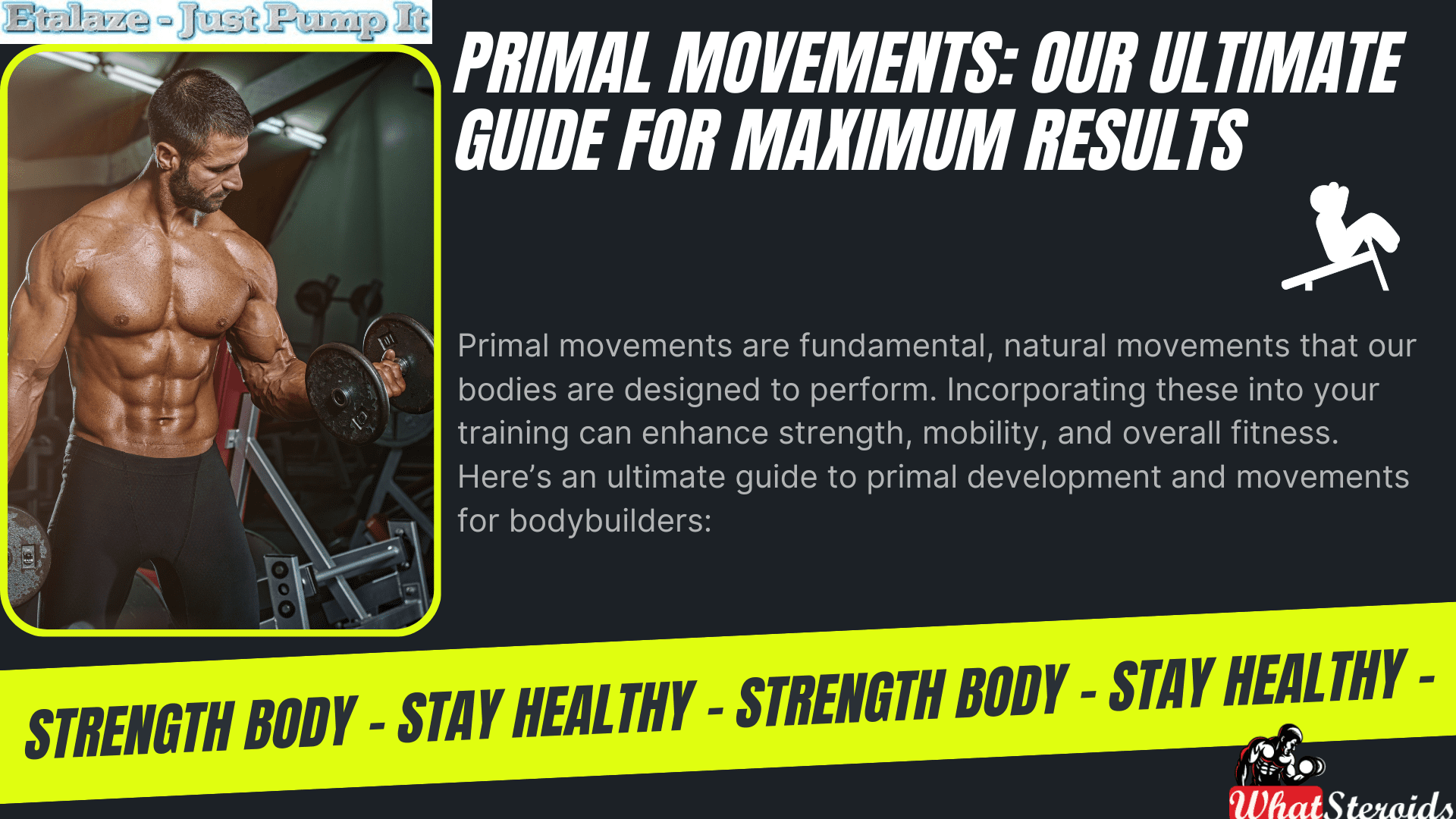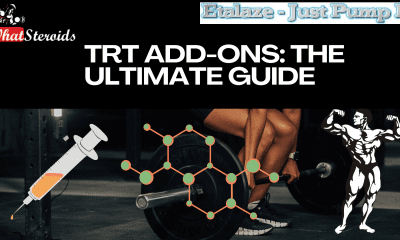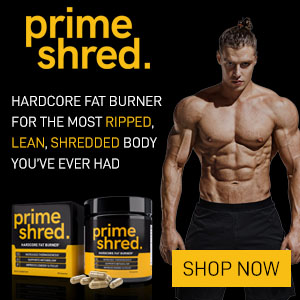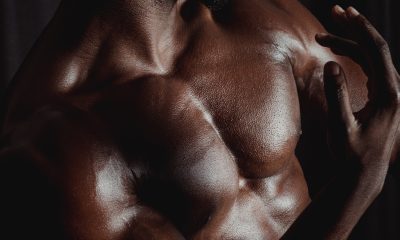Bodybuilding
Extreme Dumbbell Lunges Exercises

Undoubtedly, every one of us has our body structure; therefore, the kinetic movements you make during training with weights vary from individual to individual. You've probably seen people doing the same exercise and have noted that although they try to use identical trajectories and similar executions, they do not look like each other.
The big question is why it happens so. The answer is pretty simple –we all are different. Since our ligaments and tendons don’t have the same size and elasticity and are used to operate at specific angles, some heads are stronger than others because all muscles don’t have the same length and structure. Bone segments have a dimension that gives our movement trajectory certain uniqueness.
This is the main explanation for why free weights are often preferred instead of gym devices. Free weights require a predetermined path, imposing this way for the muscles, tendons, and ligaments to work under angles and in ways that sometimes are not familiar and are not always comfortable.
Related Article: Free Weights vs. Machines: What’s the Difference?
When training legs, for example, for exercises that seem similar at first glance, you will notice that using free weights will involve muscles or their ends, which, if working on devices, do not participate in the movement. That's why lunging with dumbbells is one exercise requiring feet on that unique path.
The Right Way of Execution of Dumbbell Lunges Sets:
The exercise, although simple, requires knowledge and application of several techniques to make it safer and more effective. Grasp two not-very-heavy dumbbells, take a deep breath, and take a large step forward from the standing position, with the distance between the feet about 10 cm.
Lower letting the weight on the front leg. The back foot will lower until the knee is close to the ground. Keep your back upright and look forward. Exhale and lift yourself, pushing strong on the front leg and helping maintain your balance using a back foot.
Dumbbell lunges exercises can be executed alternately on each foot but can be done in series on one leg, then another. If you do a series on a leg, the recovery position doesn't need to join feet because you lose exercise intensity.
Subsequent Steps Taken
Also, the step taken in front must be sufficiently large so that the front leg knee does not exceed the fingers of the same foot line, and the whole movement should be slow and controlled. Otherwise, the knee ligament is stretched, and the risks of injury are increased.
This exercise involves the buttocks muscles, quadriceps, and femoral biceps. The bigger the step you take in front, the more involved the buttock muscle of that leg.
Related Article: Lift Harder By Improving Your Intensity And Mental Focus
Lunges with dumbbells are most suitable for periods of definition or as an alternative to hyperextension for quadriceps, performed to the device, up to 4 alternative sets of 20-25 reps on each leg.
This exercise is highly intense, and you will be pleasantly surprised to find that unexplored areas of the leg muscles have been activated so far. Lunges with dumbbells in hand are safer than the bar on the neck because the back can be more easily maintained upright, and the athlete has higher stability.
How To Perform Them
Extreme Dumbbell Lunges Exercises are an effective way to build strength and endurance in the lower body. This exercise is great for targeting muscle groups such as the glutes, quads, and hamstrings.
It is also a great way to increase leg flexibility and balance. These exercises can be done safely and effectively with proper form and technique to improve overall fitness.
Targeted Exercises
Try these exercises to improve your lower leg flexibility and balance.
1. Reformer Squat
Stand with feet shoulder-width apart and hands on hips. Bend your knees, keeping your back straight and your head up.
Slowly squat down, touching the back of the heels to the ground while bending your knees further until they touch each other (as shown).
When standing up, do not allow knees to pass over toes; instead, push them outward at a 45-degree angle so that heels are directly under the knees.
Breathe deeply through your nose or mouth as you go down and out as you come up.
2. Lunge
Stand with your feet hip-width apart, knees slightly bent, and arms out to the sides at shoulder height. Step the left leg forward into a lunge, then lower your body until you feel a stretch in front of the right knee (as shown).
Keep your back straight as you bend over for 10 seconds, then return to standing by returning your right leg behind you into a lunge.
Repeat for about 4 minutes or until fatigued.
3. Plank
Lie facedown on the floor with hands under shoulders, knees under hips, and toes tucked under thighs (as shown). Press up into a straight line with your body, extending your arms and legs. Hold for 30 seconds, then release. Repeat for about 4 minutes or until fatigued.
4. Superman
Lie facedown on the floor with hands under shoulders, knees under hips, and toes tucked under thighs (as shown). Press up into a straight line with your body; extend one arm to the side in an "X" position and the other out in front of you at shoulder height (as shown).
Hold for 30 seconds on each side, then release by lowering your arms to the starting position. Repeat for about 4 minutes or until fatigued.
Mistakes to Avoid When Doing Extreme Dumbbell Lunges Exercises
Extreme Dumbbell Lunges Exercises are a great way to target the lower body and build strength and endurance. But, like any exercise, it is important to avoid common mistakes when doing them to get the most out of your workout. This article will discuss some of the most common mistakes to avoid when doing Extreme Dumbbell Lunges Exercises to maximize your gains and stay safe.
Mistake #1
Not Setting Up ProperlyIf you are not set up properly when making Extreme Dumbbell Lunges, it can be hard to find your balance point. This can lead to a lot of counterbalance movements, which will make the exercise more difficult than it needs to be. It is important to find the balance point and establish your stance before lifting the dumbbells off the ground. This way, you will know where your balance point is and will almost certainly have an easier time balancing without needing extra help from external factors like counterbalance movements.
Mistake #2
The Use of Counterbalance Movements Counterbalance movements can make the exercise more difficult than it needs to be because they require you to use your body weight. These movements are not smooth, so it is hard to find balance and maintain the movement until it is time for the next repetition.
Mistake #3
Doing Too Many RepetitionsThere is no limit on how many repetitions you should do during a set. Still, by doing too many repetitions in one set (or before you have recovered), can lead to overtraining injuries. It is important that you do not push yourself too hard during your workout and that you allow at least 48 hours of rest between sets.
Mistake #4
Not Doing Enough Sets and RepsA great rule of thumb is to do three sets of eight reps, but you should avoid doing fewer than three sets. If your muscles fail to achieve the necessary load during a single set, this could lead to overtraining injuries.
With each set, you will feel stronger and more confident in completing the next one. Advance your knowledge on how to avoid overtraining.
Overall
In conclusion, we can say that if your feet are tired of the old training exercises, then it’s the best time to delight them with qualitative dumbbell lunges exercises and enjoy fever muscle the next day!
Bodybuilding
Top Video Games for Bodybuilders in 2024

There are several video games that can be great for bodybuilders, combining fitness and fun! Here are some of the best options:
Ring Fit Adventure (Nintendo Switch)
The game uses the Ring-Con and Leg Strap to guide you through various exercises and adventures. It's a fun way to get a full-body workout while playing a game.
Fitness Boxing 2: VR Boxing Remastered (PlayStation VR)
It offers a full-body boxing workout with a variety of punches and combos. It's a great way to improve your fitness while enjoying a virtual boxing experience.
Must Read: Marvel-Inspired Training Clothing on Amazon
Just Dance 2024
This popular dance game gets you moving to the beat with a variety of songs and dance routines. It's a fun way to burn calories and improve your coordination.
Zumba Fitness
Burn It Off (Nintendo Wii): This game offers a fun and energetic Zumba workout, perfect for those who enjoy dancing and want to get a good cardio workout.
Yoga for Beginners
If you're looking for a more relaxing workout, yoga games can help improve flexibility and reduce stress. Many of these games offer guided yoga sessions that you can follow along with.
Gym Tycoon
This game lets you build and manage your own gym, complete with various workout equipment and fitness classes. It's a great way to learn about different exercises and how to create effective workout routines.
The Sims 4: Fitness Stuff Pack
This expansion pack for The Sims 4 adds fitness equipment and activities to the game, allowing you to improve your character's fitness and join the athlete career.
Grand Theft Auto: San Andreas
While not a traditional fitness game, this classic game includes bodybuilding activities that can help your character gain muscle and improve fitness.
Knockout Home Fitness (Nintendo Switch)
This game offers a variety of boxing workouts that can help improve your strength and endurance.
Gym Simulator 24 (PC)
In this simulation game, you can build and manage your own fitness empire, creating workout routines and managing gym equipment.
Let's Get Fit (Nintendo Switch)
This game focuses on pure workouts, allowing you to set programs and follow along with digital trainers for a customized fitness experience.
Beat Saber (VR)
A popular VR game where you slash blocks to the beat of the music, providing an intense full-body workout.
Synth Riders (PlayStation VR)
This game combines freestyle dance and fitness, offering high-tempo tracks and multiplayer modes for a fun and energetic workout.
Yoga Master (PlayStation)
Designed by professional yoga coaches, this game offers a variety of yoga lessons and poses to improve flexibility and reduce stress.
Les Mills Bodycombat (PlayStation VR)
A martial arts-inspired workout game with a range of workout plans and coaching to keep you motivated.
OhShape Ultimate (PlayStation VR)
This game provides a full-body cardio workout with six sessions and two difficulty levels, designed to engage every part of your body.
These games offer a mix of cardio, strength, and flexibility workouts, making them great additions to your fitness routine.
Related Article: Supplemental Breast Milk for Bodybuilders
Bodybuilding
2nd Edition of Natural Bodybuilding Competition Facts

Natural bodybuilding competitions are designed to promote and celebrate athletes who build their physiques without the use of performance-enhancing drugs. These events emphasize fair play, health, and the natural development of muscle mass and definition.
The second edition of natural bodybuilding competitions has gained momentum globally, particularly focusing on drug-free athletes. These competitions are hosted by various organizations like the INBA/PNBA (International Natural Bodybuilding Association/Professional Natural Bodybuilding Association) and OCB (Organization of Competitive Bodybuilders).
In 2024, several notable events have been planned, including the INBA Natural Universe and INBA World Cup, both of which emphasize natural bodybuilding through rigorous drug testing policies. These events aim to showcase competitors who adhere to strict drug-free protocols, and winners often earn pro cards allowing them to compete in higher-level professional competitions.
These competitions focus on categories like men's bodybuilding, classic physique, and women's figure and bikini, among others. Athletes undergo polygraph and urine tests to ensure compliance with natural bodybuilding standards. The winners often receive medals, trophies, or pro status
Bodybuilding
Primal Movements: Our Ultimate Guide for Maximum Results

Primal movements are fundamental, natural movements that our bodies are designed to perform. Incorporating these into your training can enhance strength, mobility, and overall fitness. Here’s an ultimate guide to primal development and movements for bodybuilders:
 Buy Cut Long 300 by Dragon Pharma
Buy Cut Long 300 by Dragon Pharma
Understanding Primal Movements
Primal movements are basic, functional movements that mimic the natural actions humans have performed for thousands of years. These movements are essential for developing a strong, balanced, and resilient body. They can be categorized into seven primary patterns:
Related Article: How Much Do You Know About B-AET? A Fat Burner You’ve Been Missing
- Push
- Pull
- Squat
- Lunge
- Hinge
- Rotate
- Gait (Locomotion)
The Seven Primal Movement Patterns
Push
Description: Involves moving a weight or resistance away from your body.
Examples: Push-ups, bench press, overhead press.
Muscles Worked: Chest, shoulders, triceps.
Pull
Description: Involves drawing a weight or resistance towards your body.
Examples: Pull-ups, rows, bicep curls.
Muscles Worked: Back, biceps, forearms.
Squat
Description: A fundamental lower-body movement where you lower your hips from a standing position and then stand back up.
Examples: Bodyweight squats, barbell squats, goblet squats.
Muscles Worked: Quadriceps, hamstrings, glutes, calves.
Lunge
Description: A single-leg movement that involves stepping forward, backward, or to the side and lowering your hips.
Examples: Forward lunges, reverse lunges, lateral lunges.
Muscles Worked: Quadriceps, hamstrings, glutes, calves.
Hinge
Description: Involves bending at the hips while keeping a neutral spine.
Examples: Deadlifts, kettlebell swings, hip thrusts.
Muscles Worked: Hamstrings, glutes, lower back.
Rotate
Description: Involves twisting or rotating the torso.
Examples: Russian twists, woodchoppers, cable rotations.
Muscles Worked: Obliques, abdominals, lower back.
Gait (Locomotion)
Description: Involves movements that propel the body forward.
Examples: Walking, running, crawling, bear crawls.
Muscles Worked: Full body, with emphasis on legs and core.
Benefits of Primal Movements
Functional Strength: Primal movements enhance your ability to perform everyday tasks efficiently and safely.
Improved Mobility: These movements promote flexibility and range of motion, reducing the risk of injury.
Balanced Development: By working multiple muscle groups, primal movements ensure balanced muscle development.
Core Stability: Many primal movements engage the core, improving overall stability and strength.
Increased Caloric Burn: Compound movements like these burn more calories, aiding in fat loss and conditioning.
Incorporating Primal Movements into Your Training
Warm-Up: Start with dynamic stretches and light cardio to prepare your body.
Compound Exercises: Focus on compound exercises that incorporate multiple primal movements.
Progressive Overload: Gradually increase the weight or resistance to continue making gains.
Variety: Mix up your routine to prevent plateaus and keep your workouts interesting.
Recovery: Ensure adequate rest and recovery to allow your muscles to repair and grow.
Sample Primal Movement Workout
Warm-Up: 5-10 minutes of light cardio and dynamic stretching.
Workout:
Push: 3 sets of 10-12 reps of push-ups or bench press.
Pull: 3 sets of 10-12 reps of pull-ups or rows.
Squat: 3 sets of 10-12 reps of bodyweight or barbell squats.
Lunge: 3 sets of 10-12 reps per leg of forward or reverse lunges.
Hinge: 3 sets of 10-12 reps of deadlifts or kettlebell swings.
Rotate: 3 sets of 15-20 reps of Russian twists or cable rotations.
Gait: 3 sets of 30-60 seconds of bear crawls or sprints.
Cool-Down: 5-10 minutes of static stretching and deep breathing exercises.
1. Warm-Up and Mobility Drills
Start your workout with primal movement-based warm-ups to prepare your body. For example:
- Dynamic stretches: Incorporate lunges with a twist, leg swings, and arm circles.
- Mobility drills: Include exercises like hip circles, cat-cow stretches, and thoracic rotations.
2. Compound Exercises
Add primal movements as the core of your workout. Here’s how you can structure it:
- Push Day: Combine bench presses with push-ups.
- Pull Day: Mix pull-ups with rows.
- Leg Day: Integrate squats and lunges with deadlifts.
3. Supersets and Circuits
Create supersets or circuits that include primal movements:
- Superset Example: Pair squats with pull-ups or push-ups with lunges.
- Circuit Example: Rotate through exercises like kettlebell swings, bear crawls, and Russian twists with minimal rest.
4. Functional Training Days
Dedicate one or two days a week to functional training focused on primal movements:
Sample Functional Workout
-
- Warm-Up: 5 minutes of dynamic stretching.
- Circuit: 3 rounds of:
- 10 push-ups
- 10 pull-ups
- 15 squats
- 10 lunges per leg
- 15 kettlebell swings
- 20 Russian twists
- 30 seconds of bear crawls
- Cool-Down: 5 minutes of static stretching.
5. Active Recovery
Use primal movements on active recovery days to promote mobility and flexibility:
- Activities: Light yoga, walking, or gentle bodyweight exercises like lunges and squats.
6. Progressive Overload
Gradually increase the intensity of primal movements by adding weights or resistance bands:
- Example: Start with bodyweight squats, then progress to goblet squats, and eventually barbell squats.
7. Listen to Your Body
Pay attention to how your body responds to these movements and adjust accordingly:
- Modify: If a movement feels too challenging, modify it to suit your fitness level.
- Rest: Ensure you’re getting adequate rest and recovery to prevent overtraining.
Read More: Cellular Alchemy to Restore Testosterone Levels
Sample Weekly Routine for Primal Movements
Monday: Push Day
- Bench Press
- Push-Ups
- Overhead Press
Tuesday: Pull Day
- Pull-Ups
- Rows
- Bicep Curls
Wednesday: Leg Day
- Squats
- Lunges
- Deadlifts
Thursday: Functional Training
- Circuit of primal movements (as outlined above)
Friday: Active Recovery
- Light yoga or walking
Saturday: Full-Body Workout
- Combination of push, pull, squat, and hinge movements
Sunday: Rest Day
By incorporating these primal movements, you’ll enhance your functional strength, mobility, and overall fitness. If you have any specific goals or need further customization, feel free to ask! Happy training.
For optimal performance in primal movements before a bodybuilding competition, consider these supplements:
Pre-Workout Supplements: These can provide energy and enhance performance. Look for products containing creatine, nitric oxide stimulators, and caffeine.
Post-Workout Supplements: Essential for recovery, including protein powders, BCAAs (Branched-Chain Amino Acids), and multivitamins.
Fat Burners and Metabolizers: These can help in reducing body fat while maintaining muscle mass. Ingredients like green tea extract and L-carnitine are popular.
Adaptogens: Supplements like ashwagandha and rhodiola rosea can help manage stress and improve endurance.
Conlusion
Primal movements, which include squatting, lunging, hinging, twisting, walking, pushing, and pulling, benefit from a strong foundation of functional strength and mobility. Ensuring your body is well-nourished and recovered will help you perform these movements effectively.
Incorporating primal movements into your bodybuilding routine can lead to significant improvements in strength, mobility, and overall fitness. By focusing on these fundamental patterns, you can build a well-rounded, resilient body that performs well both in and out of the gym.
-

 Steroids2 years ago
Steroids2 years agoVOX Testing: Why Bodybuilders Must Have It Tested Regularly
-

 Steroids2 years ago
Steroids2 years agoShavers and Other Body Grooming Equipment for Bodybuilders In 2023
-

 Steroids2 years ago
Steroids2 years agoChatGPT and Other Avenues to Find Great Bodybuilding Coaches
-

 Steroids2 years ago
Steroids2 years agoBest Oil Recommendations Before Competition for Subtle Shimmer
-

 Steroids2 years ago
Steroids2 years agoPowerlifting Vs Power Building: Find Out the Big Difference and When to Shift Between the Two
-

 Nutrition1 year ago
Nutrition1 year agoEverything Nutritional Food: What’s Too Much Or Too Little
-

 Anabolic Steroids1 year ago
Anabolic Steroids1 year agoLegality of Anabolic Steroids In Latin America
-

 Beginners1 year ago
Beginners1 year agoTren Cycle for Beginners
-

 Bodybuilding Products9 months ago
Bodybuilding Products9 months agoTelmisartan In Bodybuilding: An Expert’s Advice
-

 Bodybuilding11 months ago
Bodybuilding11 months agoList of FDA-Approved Peptides
-

 Bodybuilding1 year ago
Bodybuilding1 year agoCompetition Prep Cycle for Pro Bodybuilders
-

 Anabolic Steroids7 months ago
Anabolic Steroids7 months agoHow Much Do You Know About B-AET? A Fat Burner You’ve Been Missing
-

 Bodybuilding1 year ago
Bodybuilding1 year agoChia Seeds in A Bodybuilder’s Diet: An Expert’s Advice
-

 Steroids10 months ago
Steroids10 months agoTrenbolone: Why it Remains A Beast In the Market
-

 Anabolic Steroids1 year ago
Anabolic Steroids1 year agoNatural Steroids for Bodybuilding
-

 Anabolic Steroids12 months ago
Anabolic Steroids12 months agoStart The New Year Strong With These Tips
-

 Product Reviews7 months ago
Product Reviews7 months agoTop Vitamins for Skin Health
-

 Beginners1 year ago
Beginners1 year agoCalisthenics: Secret to Building A Better Upper and Middle Body
-

 Bodybuilding6 months ago
Bodybuilding6 months agoHormone Replacement Therapy (TRT) Cycle Guide
-

 Steroids7 months ago
Steroids7 months agoMajor Bodybuilding Peptides Explained
-

 Bodybuilding7 months ago
Bodybuilding7 months agoHere Is How To know Your MRV (Maximum Recoverable Volume)
-

 Bodybuilding1 year ago
Bodybuilding1 year agoUnique Things That Have Redefined Mr Olympia Over The Years
-

 Steroids8 months ago
Steroids8 months agoAnadrol Cycle: Benefits, Doses, Alternatives, etc.
-

 Steroids6 months ago
Steroids6 months agoOmnitope (Oxytocin)
-

 Bodybuilding Products8 months ago
Bodybuilding Products8 months agoTRT Add-ons: The Ultimate Guide














 Click here to buy 1-Test Cyp/DHB 100 by Dragon Pharma
Click here to buy 1-Test Cyp/DHB 100 by Dragon Pharma












